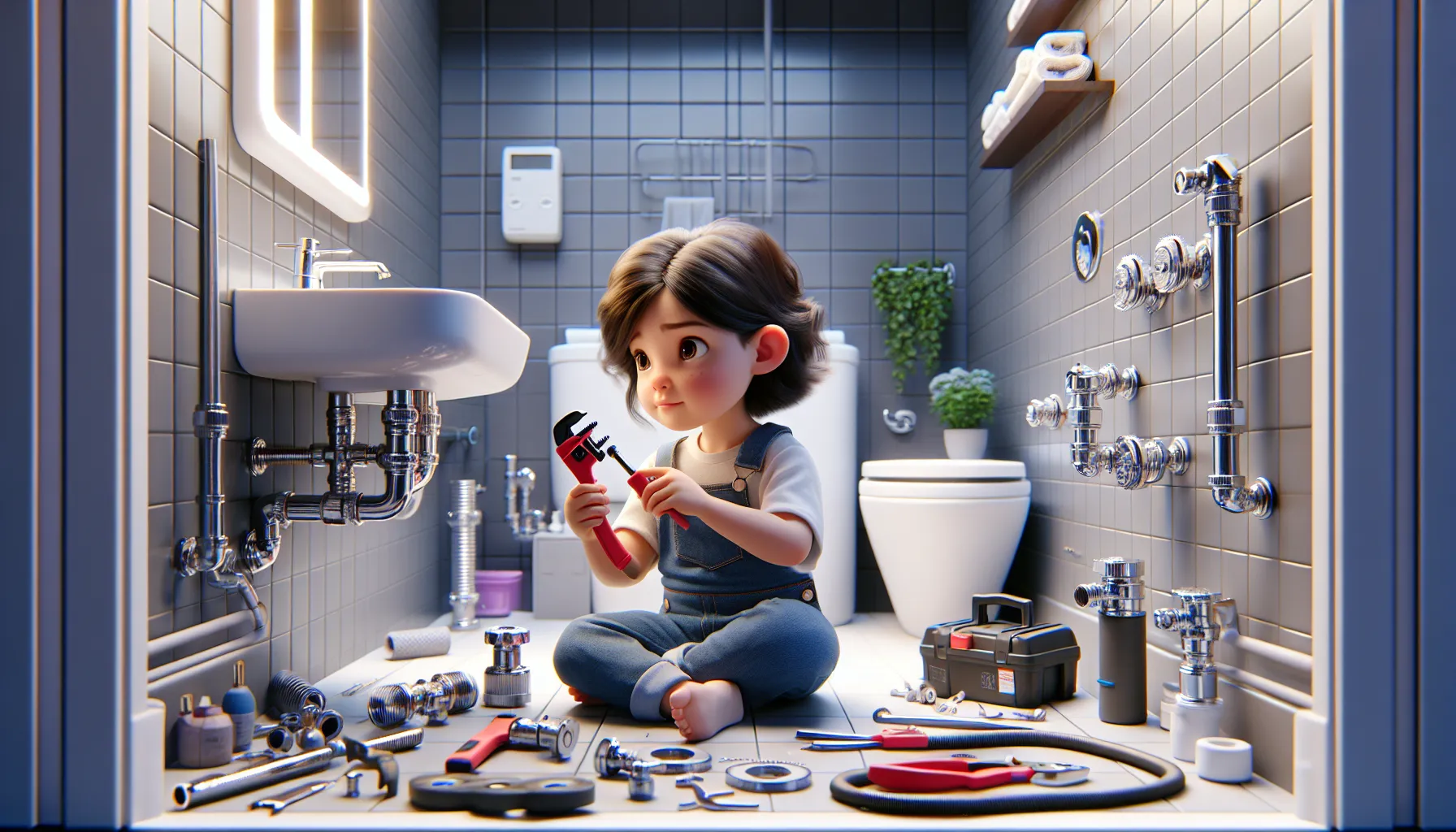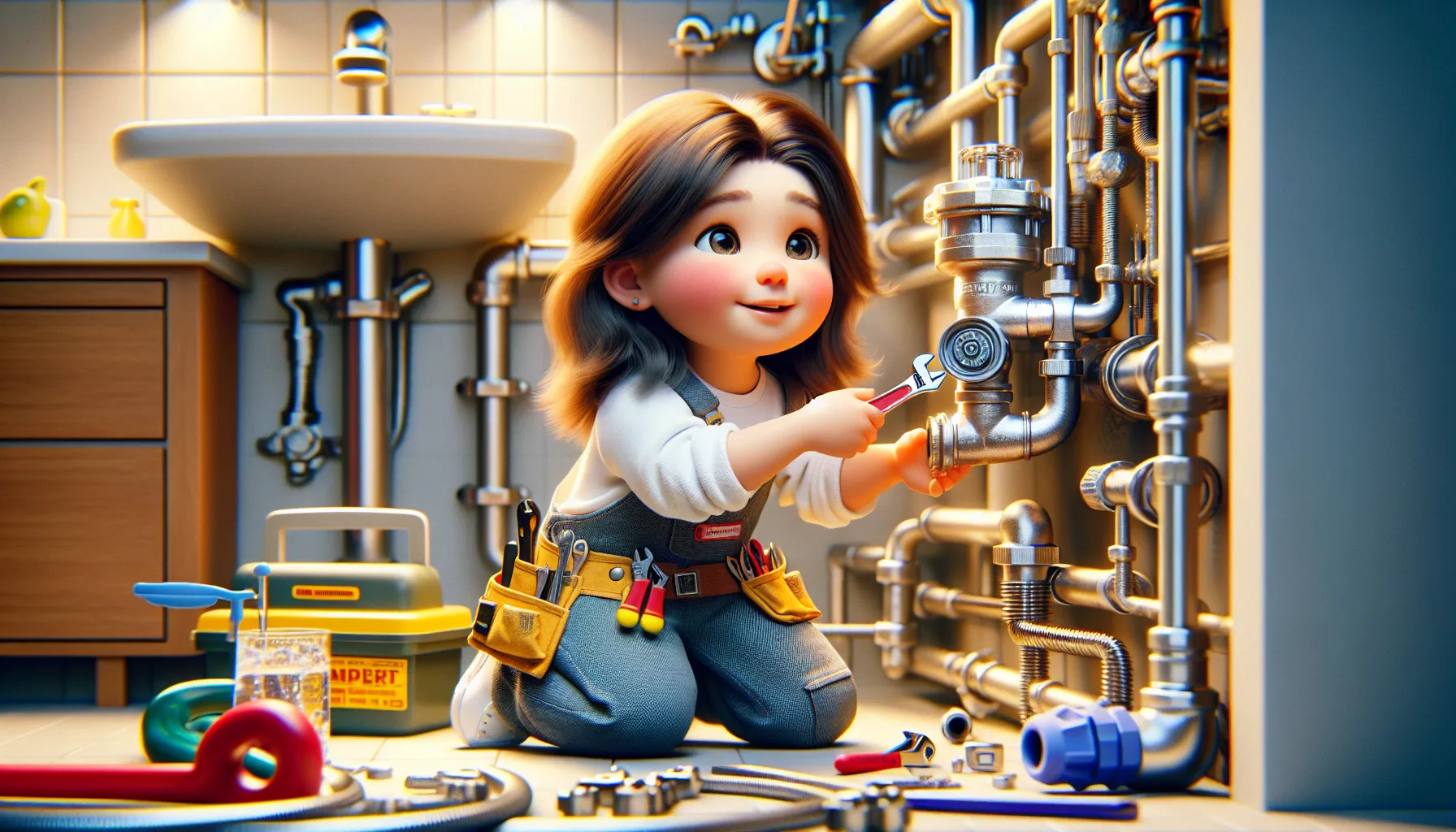Most homeowners are unaware of the potential dangers hidden water leaks can cause in their homes. Water leaks can lead to mold growth, structural damage, and costly repairs if left undetected. It’s crucial to know how to spot these leaks early on to prevent further issues.
1. Monitor your water meter: One of the most reliable ways to detect a hidden water leak is by checking your water meter. Shut off all water sources in your home and record the current reading. Wait a few hours without using any water, then check the meter again. If the reading has changed, you likely have a leak.
2. Look for signs of water damage: Keep an eye out for water stains on walls, ceilings, or floors, as well as peeling paint or wallpaper. Musty odors or the sound of running water when no faucets are on can also indicate a hidden leak.
3. Check your water bill: A sudden spike in your water bill without an increase in usage can be a sign of a hidden leak. Compare your current bill to previous months to see if there is a significant difference.
4. Perform a dye test: To check for toilet leaks, add a few drops of food coloring to the tank. Wait 15 minutes without flushing, then check the bowl. If the water in the bowl changes color, you have a leak that needs to be addressed.
By being vigilant and using these methods to detect hidden water leaks, you can save yourself from costly repairs and potential health hazards in your home.
Key Takeaways:
- Monitor your water bill: A sudden increase in your water bill can be a sign of a hidden water leak.
- Check for water stains: Look for water stains on walls, ceilings, or floors which may indicate a leak behind the surface.
- Inspect your water meter: Turn off all water sources and check if the meter is still running, as movement indicates a possible leak.
- Listen for running water: Unexplained sounds of running water in your home, even when taps are turned off, can be a sign of a hidden leak.
- Perform a dye test: Add food coloring to your toilet tank and see if the color appears in the bowl without flushing, indicating a leak.
Understanding Water Leaks
While water is important for life, it can also wreak havoc on your home if it starts leaking. Understanding how to detect hidden water leaks early can save you from extensive damage and costly repairs. In this blog post, we will discuss four ways to detect a hidden water leak in your home.
Common Causes of Water Leaks
On average, water leaks are one of the most common issues homeowners face. These leaks can stem from various sources, including old or faulty plumbing, corroded pipes, loose fittings, or even shifting foundation. It’s crucial to stay vigilant and address any potential leak sources promptly to prevent further damage to your property.
Identifying the Signs of a Hidden Water Leak
Hidden water leaks can go unnoticed for weeks or even months, causing structural damage and mold growth in your home. It’s important to recognize the signs of a hidden water leak, such as water stains on walls or ceilings, musty odors, an unexplained increase in water bills, or the sound of running water when faucets are off. If you suspect a hidden leak, it’s best to take immediate action to mitigate any potential damage.
Hidden water leaks can occur in various places, including behind walls, under floors, or in the foundation of your home. These leaks are not always visible, making them challenging to detect without professional help. If left untreated, hidden water leaks can lead to extensive damage and costly repairs.
Way 1: Monitoring Water Usage
Little changes in your water usage can be an indicator of a hidden water leak in your home. By monitoring your water usage, you can detect potential leaks early and prevent further damage.
Reading Your Water Meter
Water meters are vital tools for monitoring water usage in your home. To check for leaks, turn off all water sources in your house and note down the reading on your water meter. Leave it for a few hours without using any water, then check the meter again. If the reading has increased, it could indicate a leak.
Interpreting Unexplained Increases in Water Bills
To interpret unexplained increases in water bills, start by comparing your current bill with previous ones. If you notice a significant and sudden increase in your water bill without a corresponding increase in usage, it could point to a hidden leak in your home.
Unexplained increases in water bills can be a sign of a leak that is causing water to be wasted without your knowledge. Ignoring these increases can lead to costly repairs and potential water damage in your home.
Way 2: Inspecting the Home for Physical Signs
Many times, a hidden water leak can go undetected until it causes significant damage. One of the ways to catch it early is by inspecting your home for physical signs that indicate a leak. By being vigilant and knowing what to look for, you can potentially save yourself from costly repairs and potential health hazards.
Wall, Ceiling, and Floor Indicators
Floor: Keep an eye out for buckling or warping in your floorboards, especially in areas near water sources like bathrooms or kitchens. If you notice any unexplained changes in your flooring, it could be a sign of water damage caused by a leak.
Mold and Mildew Presence
Wall: The presence of mold or mildew on your walls can be a clear indication of a hidden water leak. If you notice musty odors or see dark patches on your walls, it’s crucial to investigate further to determine the source of the moisture. Mold and mildew growth not only indicate a water issue but can also pose serious health risks to you and your family.
Mold: It’s important to address mold and mildew promptly to prevent further damage to your home and safeguard your health. If you suspect a hidden water leak based on these physical signs, it’s highly recommended to consult with a professional plumber or water damage restoration specialist to locate and resolve the issue.
Way 3: Using Sound to Identify Leaks
The Sound of Running Water
Despite their elusive nature, hidden water leaks often reveal themselves through sound. The sound of running water when all faucets are turned off could be a telltale sign of a leak within your plumbing system. This auditory clue is particularly useful in the quiet of the night when ambient noise is minimized, making it easier to pinpoint the source of the leak.
Tools to Amplify the Sound of Hidden Leaks
On top of listening closely for the sound of running water, you can use various tools to amplify the sound of hidden leaks. One such tool is a plumber’s stethoscope, which can help pinpoint the exact location of a leak by amplifying the sound. Another useful tool is a sound amplifier, which uses advanced technology to detect leaks behind walls or under floors.
Tools such as electric listening devices and acoustic leak detectors are also available to help professionals identify leaks with precision.
Way 4: Professional Assessment and Leak Detection Equipment
Now, when it comes to detecting hidden water leaks in your home, sometimes it’s best to leave it to the professionals. They have the expertise and specialized equipment to pinpoint leaks that may not be visible to the naked eye. Calling in a professional for a thorough assessment can save you time, money, and prevent further damage to your property.
When to Call a Professional
Any time you suspect a hidden water leak and have exhausted all DIY methods of detection, it’s time to call in a professional. Signs such as unexplained high water bills, damp or moldy spots on walls or ceilings, or the sound of running water when no water is in use could indicate a hidden leak that needs expert attention.
Advanced Detection Tools Used by Professionals
-
Professional Leak Detection Tools
1. Infrared Cameras Help detect temperature changes that indicate the presence of water. 2. Acoustic Listening Devices Can pick up the sound of water escaping from pipes underground.
Professional plumbers utilize advanced leak detection tools to accurately locate hidden water leaks in residential properties. Through the use of technologies such as infrared cameras and acoustic listening devices, they can detect leaks behind walls, under floors, or in other hard-to-reach areas. These tools help pinpoint the source of the leak without the need for invasive procedures, saving time and money in the long run.
-
Advanced Leak Detection Equipment
1. Ground Penetrating Radar (GPR) Uses radar pulses to map subsurface structures and detect leaks. 2. Thermal Imaging Cameras Identify temperature differentials that suggest a leak location.
Advanced leak detection equipment like Ground Penetrating Radar (GPR) and Thermal Imaging Cameras offer precise and non-destructive ways to locate hidden water leaks. These tools provide detailed information about the extent and location of the leak, allowing professionals to take targeted action to repair the issue. By investing in advanced leak detection technology, plumbers can offer efficient and effective solutions for homeowners dealing with water leaks.
Preventative Measures and Regular Maintenance
Proactive Steps to Prevent Future Leaks
Noticing a hidden water leak in your home can be a costly and stressful situation. However, there are steps you can take to prevent future leaks from occurring. One of the most effective preventive measures is to regularly inspect the plumbing system in your home. Look for any signs of corrosion, rust, or wear and tear on pipes, as these can be indications of potential leaks. Additionally, sealing any cracks or holes in pipes can help prevent water from leaking out.
Scheduling Routine Inspections
Future water leaks can be avoided by scheduling routine inspections by a professional plumber. These inspections can help detect any issues early on before they turn into major leaks. Regular maintenance of your plumbing system can also help prevent leaks by ensuring that all components are in good working condition. It is recommended to schedule inspections at least once a year or whenever you suspect a leak may be present.
Proactive homeowners can also benefit from using wireless water leak detectors that can alert them to any potential leaks before they cause significant damage. These detectors can be placed in areas prone to leaks, such as the kitchen, bathroom, or basement, providing peace of mind and saving money in the long run.
To wrap up
As a reminder, detecting a hidden water leak in your home is crucial to prevent costly damages. By closely monitoring your water bill for unexplained increases, checking for damp or discolored spots on walls or ceilings, using a water meter to detect leaks, and paying attention to musty odors or mold growth, you can identify potential leaks early on and take necessary actions to address them. Promptly repairing hidden water leaks not only saves you money on water bills but also mitigates the risk of structural damage and mold growth in your home.
FAQ
Q: Why is it important to detect hidden water leaks in your home?
A: Detecting hidden water leaks in your home is crucial to prevent costly damage to your property. Water leaks can lead to mold growth, structural damage, and high water bills if left undetected.
Q: What are the signs of a hidden water leak in my home?
A: Some common signs of a hidden water leak include unexplained increases in water bills, musty odors, water stains on walls or ceilings, and the sound of running water when no fixtures are in use.
Q: How can I detect a hidden water leak behind walls or underground?
A: To detect a hidden water leak behind walls or underground, you can use a thermal imaging camera to identify temperature variations, listen for the sound of running water with a stethoscope, or hire a professional leak detection service that uses specialized equipment.
Q: What should I do if I suspect a hidden water leak in my home?
A: If you suspect a hidden water leak in your home, it is important to act quickly. Turn off the main water supply to your home to prevent further damage, and contact a plumber or leak detection specialist to locate and repair the leak.
Q: How can I prevent hidden water leaks in my home?
A: To prevent hidden water leaks in your home, regularly inspect plumbing fixtures and pipes for any signs of damage or corrosion, maintain proper drainage around your property to prevent water buildup, and consider installing a leak detection system that can alert you to leaks before they cause extensive damage.



